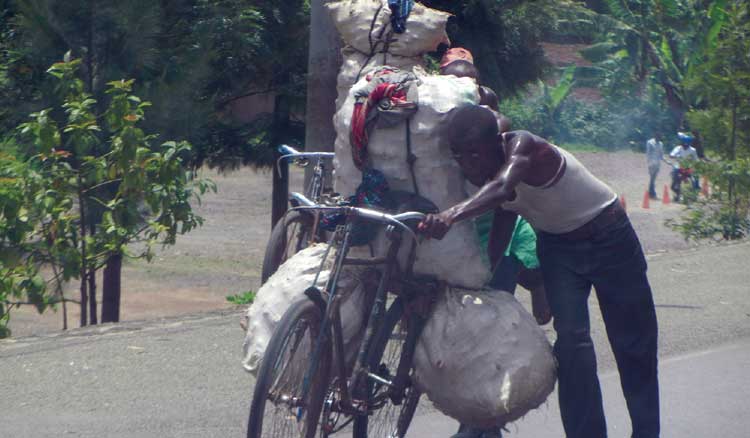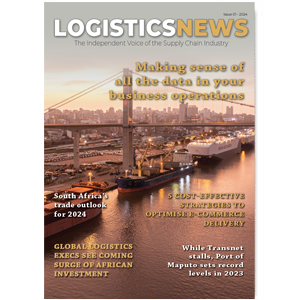Moving goods from source to destination through Africa is a multidimensional challenge and one where first-world thinking still trumps appropriate. A change in game needs to happen.
Most of us (Logistics News readers) live and work in and from South Africa. We complain that too little freight travels by rail and that 75% rolls along our roads, damaging and congesting on the way. We blame the fuel price (until recently), the cost of labour, repair costs due to deteriorating road conditions, the cost of capital, and many more causes.
At the same time we ponder the big industry issues for 2015. Issues like:
- Radically lower energy costs – passing the benefit through supply chains to end consumers, or maybe manufacturers and retailers prefer passing this to their shareholders
- The commercialisation of 3D printing – to produce at the point-of-consumption rather than transport over long distances (like GE jet nozzles in the US) • Dimensional LTL (less than truckload) pricing – due to systems that accurately calculate space required and fit into trailers
- Further consignee/transporter collaboration – to increase efficiencies and drive prices down … or up?
- Pervasive IT – using Big Data and predictive analytics to drive profitability improvements, seeking out the value (best and worst routes, customers, products, destinations and pricing)
- Growth in last-mile service-provider offerings and efficiencies.
But now most of Southern Africa – the part we service – has a comprehensive road network of motorways or at least tarred roads ideal for hub-and-spoke distribution. So FTL (full truck load) logistics is regular, and plannable to take account of regulations, axel loads and other factors. And all fed by multi-year contracts. But this is the easy costeffective space in which to be. Alas, railway infrastructure for general and retail freight is still hopelessly inefficient or just not there.
With intra-Africa trade, the transport opportunity we should be focusing on is development of appropriate ‘spoke’ or local fine distribution and last-mile. Spoke delivery needs vehicles that suit variable load combinations, ability to drive on the left or the right, capable of traveling on curved, hilly and often rough roads. These vehicles need to be basic, easy to repair and local fuel efficient.
The most basic tool
Africa and other developing regions already have the most basic answer – the bicycle. I have just returned from Rwanda where farming families tend their crops in harmony, then load sweet potatoes into sacks weighing 60 kg, fit two or three onto a standard bicycle, and take their wares to market, racing downhill and pushing, sometimes with help, uphill. Next, the bike and owner return with bamboo for the fence, or wood or drums of water. It is amazing that the basic design used by millions of rural people is still virtually unchanged after decades of use. And the fuel cost – well, many times the driver eats or drinks some of the load on the way – but basically, no filling stations are needed.
There are small (mostly Chinese 2 t to 3 t) trucks as well, with engines where more torque is required. But on Rwandan gradients, bigger 20 t loads regularly slow traffic, forming queues – then everyone uses triple their normal fuel in first gear and the end result is that basic foods can become unaffordable.
The transport innovation we need – in Africa anyway – is a safer, improved load carrying, energy recycling, alternatively powered (methane, hydrogen) small trucksfor the longer trips.
Then for rural spoke distribution we will have a fit and healthy sustainable transport system – instead of what we’ve got.




